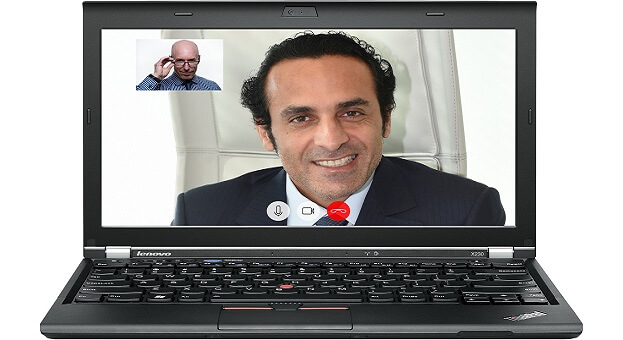As the coronavirus spreads, remote work from home has become a major reality for thousands of workers across countries. To reduce the spread of infection, companies are closing their doors and allowing employees to work from home in a shift to using online platforms.
Even large tech giants like Google and Amazon announced that they would be working remotely until the pandemic safely ends.
If your employer has unexpectedly shut down, you may feel navigating remote work to be challenging and stressful. Whether you already have a job or are now looking for employment elsewhere, you’ve probably faced some tough challenges brought to the world by COVID-19.
Hire Equal is here to ease some of your concerns and provide insight in benefiting you from getting a new job online.
From a job seeker’s point of view, one of such challenges is the need to deal with a video interview or video resume instead of a traditional in-person meeting.
But with a global catastrophe exceeding 1.9M infected with the coronavirus, workplaces are abruptly turning to video interviews as a safer option. Plus, video interviews are more time efficient and more cost-effective than personal meetings which can take more work away from an interviewer.
What are the pros and cons of video interviews?
An online interview is very similar to an in-person meeting; the main difference is that there’s no need to travel anywhere to get acquainted with an employer. The equipment needed to conduct a video interview is to have access to an Internet-connection and a front camera.
As with personal face to face communication, you can still showcase your personality. And you might feel more comfortable in doing so. That is, you can be interviewed directly from your own bedroom, kitchen, heck even the bathroom (only we highly recommend against this) all while drinking a cup of your favorite coffee. The home atmosphere benefits you as it creates a sense of comfort and security.
But there are some drawbacks as well.
Internet connection might be weak and lagging. The common expression "can you hear me?" in the middle of the interview is not the most pleasant way to have a conversation with a possible future employer.
Then there’s the camera. The camera position might be too far or close. Given these and other small details such as background and lighting, landing a successful online interview involves organization and prep work to win over the employer.
How do I prepare for an online interview?
Despite the convenience of not having to travel to do an in-person interview, often candidates recognize that a video interview for them is no less stressful than meeting face to face in person. If the virus outbreak has pushed you to have a video interview or will in the future, follow these steps to develop your online-interviewing skills and get a position.
Step 1: Check your technical back-up twice
There is nothing worse than getting ready for a conversation and skipping it because of a poor Wi-Fi connection.
Solve all existing and any potential audio, video or connection problems:
- Set up your PC 30 minutes before the interview starts
- Make sure your internet connection is stable and secure
- Identify potential problems you may come up with during the interview and find back-up solutions in advance such as using your phone instead of your computer
Step 2: Maintain your look is professional and you are dressed for the job you want
.
Pajamas are probably the best clothing in the world, but you should resist the temptation. You need to look your best for an interview so get prepared the same as you would for an in-person meeting.
According to the this can have a strong effect on creating the right professional mindset that will come through in your attitude and speech.
The level of formality of your look should match the industry for which you’re interviewing, advises CraftResumes remote team. If you’re applying to the company where workers must wear business casual attire daily, you should wear something similar to make the interviewer feel that you understand how the company likes to represent itself.
Step 3: Choose a background with no distractions.
You want the focus to be on your face and what you’re saying during the interview, not so much a distracting background. Try picking a background with little to no clutter that is clean and clear.
Specifically, it is better to choose a monochrome color rather than a scene of an opened closet, your bed, the TV turned on, and so on. The primary function of background is to bring the focus to the object on the foreground and, in this case, the object is you. As for lighting, it is better when the light is directed to your face and that its source is behind the camera. The window should not be a backdrop as the figure may then be dimmed.
Also, go to an area where you have privacy and won’t be heard. Warn people living in the same office or apartment so that they won’t distract you.
You won’t believe it, but an apartment in the background can tell a recruiter a lot about you, and he/she doesn’t have to be Sherlock Holmes. You have two options: either to remove it from the video shot or to cover it up with something that would allow that of a neutral background.
Step 4: Pick a well-lit space so that the interviewer can clearly see you
.

A spring sun may warm your back, but the interviewer will only see a bright light around you and a dark spot instead of your face.
Instead, test your video before the interview to make sure lights aren’t adding any shadows on your face. An easy yet common distraction recruiters get annoyed by is when interviewers have an overhead light that creates unflattering shadows on one’s image.
A nice trick is to have one light coming from behind you, one light on your right, and one light on your left to create a glow around you.
Step 5: Maintain a convenient and quiet location.
A crowded cafe might be good for chatting with friends, but it might not be a good idea to talk to your employer. The same works if you’re interviewed from home.
To avoid any inconveniences, ask your relatives not to distract you during the conversation. Afterall noise is a major distraction and can make a difference if verbal communication is difficult to interpret.
Step 6: Stay responsive and easy to reach
At this point, you should:
- Answer calls from unknown numbers as it might be the interviewer
- Record a professional voicemail.
- Regularly check your email including spam folders in case the interviewer is running late or needs to reschedule
Step 7: Keep The Focus
Prior to the interview, gather some notes and a list of questions about the company. During the actual interview, support positive emotions with jokes and show your real personality. Try to answer questions coherently and concisely.
To make it easier to convince the recruiter of your professionalism, provide figures, examples, and some facts. Candidates are often asked to give examples of their professional achievements to evaluate her / his suitability of the vacancy and to decide if it makes sense to invite the applicant for a position or another interview.
Step 8: Smile :)
The experience of all conversations lives or online shows that a smile overcomes any barriers and operates at any distance.
Step 9: Stay Calm – social distancing will end one day.
The worst option you may come up with during social distancing is to not bother and learn the ways of getting a new job through these uncertain times. Rather, you should keep your resume circulating so that when the pandemic ends, your job search won’t be at the beginning. Planning and starting today will make you more competitive and stronger once the economy returns to normal.
Step 10: Reflect
Write down your thoughts or something you may be able to do better next time. (See: Successful Tips People Do After Every Interview.) The goal is to constantly keep improving upon your skills and make yourself a better presenter each time you have any kind of interview, online video conversation or face to face in person.
If you feel prepared and are ready to start finding a new career or job, start searching for your next job on HireEqual today.
Jennifer Broflowski of CraftResume contributed to this article.



